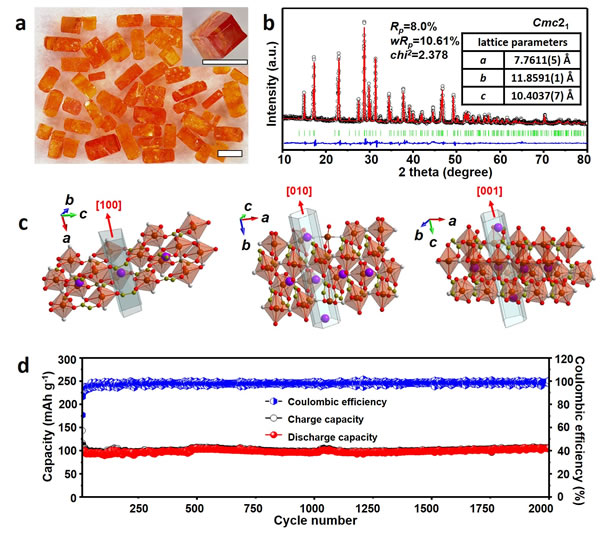Recently, Tang Yongbing, a researcher at the Research Center for Functional Thin Film Materials, Shenzhen Institute of Advanced Technology, Chinese Academy of Sciences and his team, together with Cheng Huiming, a researcher at Tsinghua-Berkeley International College, have successfully developed a new type of potassium ion battery cathode material with long cycle stability. Related research achievements "A fluoroxalate cathode material for potassium-ion batteries with ultra-long cyclability" Communications, 2020, DOI: 10.1038 / s41467-020-15044-y).
Due to the limited and uneven distribution of resources such as lithium and cobalt, lithium-ion batteries are difficult to meet the urgent needs of large-scale energy storage. Potassium ion batteries are receiving more and more attention as a potential low-cost energy storage method. At present, the development of anodes and electrolytes for potassium ion batteries is relatively mature, while the development of cathode materials is relatively slow. The main reason is that the half-valence of potassium ions is significantly greater than that of lithium ions (1.38 vs 0.76 Angstroms). When the positive electrode is deintercalated with potassium ions, the crystal structure is prone to collapse, resulting in a rapid decline in battery performance. The current solution is to look for materials with an open crystal skeleton structure, such as Prussian blue analogs, whose larger ion diffusion channels allow free entry and exit of potassium ions. However, the lattice structure of the Prussian blue analog is easy to introduce solvent water molecules during the preparation process, and these water molecules occupy the channel position on the one hand, hindering the diffusion of potassium ions; on the other hand, it easily reacts with the electrolyte and causes battery capacity Decay quickly.
In view of this, in the process of searching for compounds with an open crystal framework structure, Tang Yongbing and his team members Ji Bifa, Yao Wenjiao, Zheng Yongping and others successfully developed a polyanion potassium fluorooxalate with a highly stable developed crystal framework structure Electric cathode material (KFeC2O4F). Because the three-dimensional structure of the cathode material contains multiple large-size channels such as 4.3x4.2 Angstroms and 6.3x3.7 Angstroms, the volume change of potassium release is only 7.6%, which is equivalent to LiFePO4 cathode material with high stability. (~ 7.8%), the skeleton can allow the reversible deintercalation of potassium ions through "breathing", accompanied by the redox reaction of Fe2 + / Fe3 +. The potassium electric cathode material exerts a reversible capacity of 112 mAh g-1 and excellent cycle stability at a current of 0.2 A g-1. The capacity retention rate after 2000 cycles is 94%, and it has a large-scale energy storage field. Potential application prospects. This work is of reference significance for the development of new types of potassium-based positive electrode materials based on cheap metals.
This work was supported by the National Natural Science Foundation of China, Guangdong Province, and Shenzhen Science and Technology Program.

Figure: Crystal and phase characterization (a, b), crystal structure analysis (c) and long-cycle performance test curve (d) of the new potassium electric positive electrode material
Aluminum Casting Auto Parts,Aluminum Auto Parts,Aluminum Spare Auto Parts,Heavy Truck Auto Parts
NINGBO AIKEHAN METAL PRODUCT CO.,LTD , https://www.diecastingsupplier.com